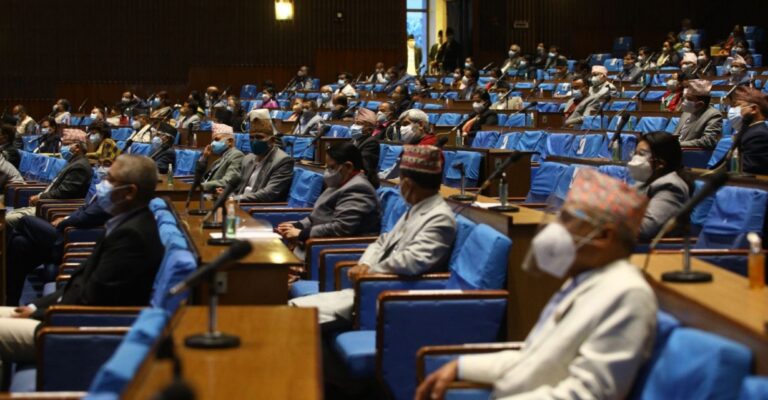
The Parliament Secretariat has to pay more than Rs 110 million as rent of the building, popularly known as the International Convention Center aka the parliamentary building, where meetings of the House of Representatives and the National Assembly are held, BBC Nepali has reported.
The rent is due since April. Meanwhile, no new law other than the budget was passed by the parliament since April.
Amid obstruction from the main opposition party CPN-UML, it is unclear whether the law-making process will move forward during the freshly resumed parliament sessions, which started from Tuesday.
According to the records of the Parliament Secretariat, 26 sittings of the House of Representatives were held since April. In the meantime, 28 sittings of the National Assembly, known as the Upper House, were held.
Meetings were held at the International Conference Center in New Baneshwor for about 30 days. Most of the sittings of both the houses were held at the same time.
As many as 30 bills under consideration in both the houses of the federal parliament have yet to be passed.
Officials of the Parliament Secretariat say that the 10 months’ rent for 54 sittings of both the houses would cost a little more than Rs 2.1 million for one sitting.
WHAT THE HOUSES DID?
The National Assembly has passed seven bills in a span of 10 months. However, as the provision states that the bills need to be approved by both the houses for implementation, the said bills have yet to be approved by the House of Representatives.
Although the budget for the fiscal year was passed through the meetings held amidst the opposition’s obstruction, the House of Representatives did not address the bills under consideration in the parliament.
WHY PAY RENT?
The Parliament Secretariat has been renting the International Convention Center for House sessions for the past 13 years as it does not have its own assembly hall to host people’s representatives’ meetings in order to discuss issues related law making and public interest.
The rent of the building, which was initially set at Rs 70 million, has now more than doubled.
According to Rojnath Pandey, spokesperson of the Parliament Secretariat, the Secretariat has agreed to pay Rs 150 million annually to the International Convention Center Development Committee for the management of the building — owned by the Ministry of Urban Development.
“We have agreed to pay Rs 150 million annually. It is conditional on a regular increase of 10 per cent. But since other government offices are also rented in the same premises, the Parliament Secretariat will deduct the rent accordingly,” Pandey said.
According to him, the Law Commission and Investment Board have also rented the building so the Parliament Secretariat has been paying Rs 136.3 million as rent, excluding water and electricity bills. The agreement stipulates that the Parliament Secretariat have to pay up to Rs 600,000 monthly for electricity and up to Rs 200,000 for water.
Officials at the Parliament Secretariat said that they did not have to pay extra for water and electricity when there are fewer meetings.
According to the Secretariat, a budget of Rs 165 million has been allocated to the Parliament Secretariat for rental purposes this fiscal year.
Spokesperson Pandey said that even though the building is the property of the central government, the parliament has to pay the rent.
WHEN WILL PARLIAMENT HAVE ITS OWN BUILDING?
Before moving to the International Convention Center, parliamentary sessions were convened at the Rana-era gallery sitting at Singha Durbar.
However, after the building became too narrow for the 601 members of the Constituent Assembly, the Parliament Secretariat has renting the International Convention Center since 2008.
Two years ago, a contract worth Rs 7.73 billion was awarded for the construction of two new buildings at the Putali Bagaicha inside Singha Durbar.
“So far, only 40 percent of the construction works have been completed. It may take another two to three years to complete the buildings. Even then, the interior decoration may take more time,” Pandey said.






